
A Simpler, Safer Way to Evaluate Tubal Patency
Q&A with Dr. Michael Grynberg

Discover how ultrasound can provide critical information for women struggling to get pregnant—and why it’s easier on patients.

Tubal occlusion accounts for 25 to 30 percent of infertility cases.She needs to know if her tubes are blocked, but traditional tests are invasive, uncomfortable and inconvenient.Is it possible to deliver a crucial diagnosis without providing a poor patient experience?
Dr. Michael Grynberg, Director of Reproductive Medicine & Fertility at Hôpital Antoine Béclère, talks about how ultrasound can provide critical information for women struggling to get pregnant—and why it’s easier on patients.
Q: What are the standard modalities for evaluating tubal patency?
A: Laparoscopy and Hysterosalpingogram (HSG) are the most common ways to look for a blockage, but are invasive, uncomfortable and can require many appointments. The main advantage of HSG is that you can avoid laparoscopy, but x-ray and contrast are involved, so patients are exposed to radiation and the exam can be quite painful. The tests aren’t always necessary because there are ultrasound options that can also provide answers.
Q: How do you test tubal patency in your practice and why?
A: For the basic workup, I recommend 3D hysterosalpingo contrast sonography (HyCoSy) or hysterosalpingo foam sonography (HyFoSy). I think you get the same information as HSG in the end, but you don’t have the drawbacks, such as exposure to radiation or possible pain. Using Voluson’s™ 3D technology, these tests are extremely simple and non-invasive. The exam can also be coupled with Sonohysterography—and this allows you to get a better look at the uterine cavity and other possible causes of infertility, like myomas, polyps or malformation. Besides making the right diagnosis, I think it’s very important to think about the patient experience—and that includes providing an overall fertility workup in one day.
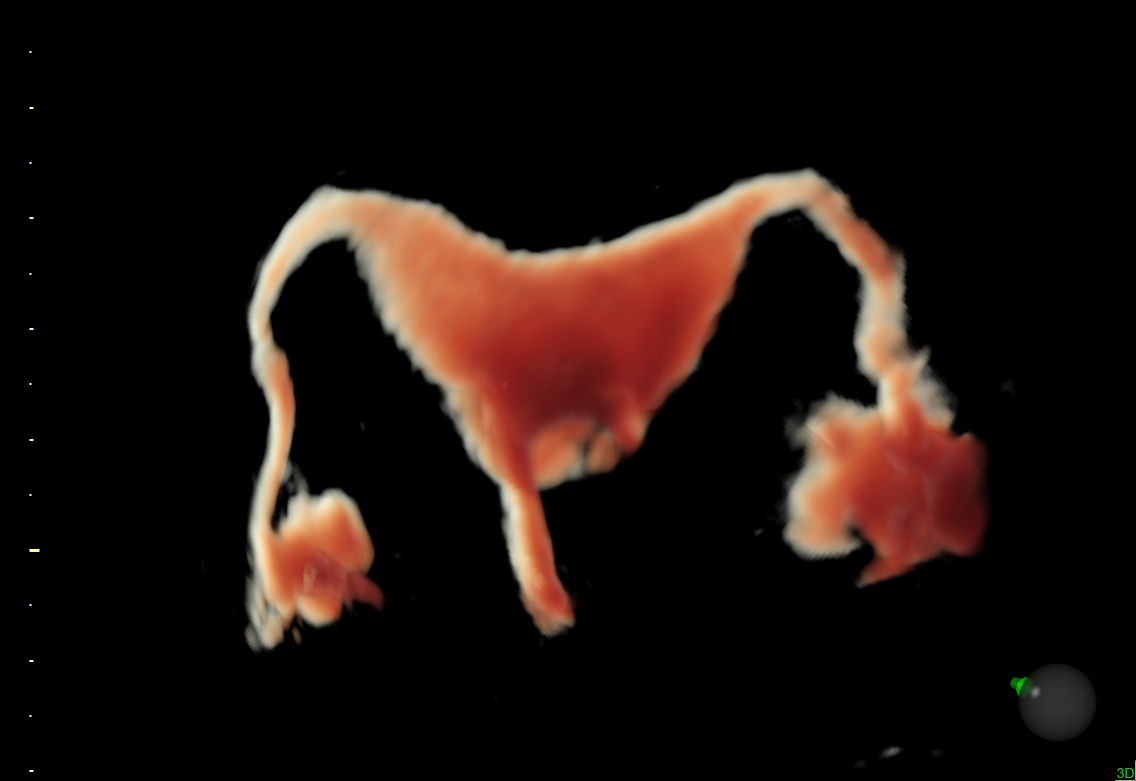
3D HyCoSy exam demonstrating two patent fallopian tubes
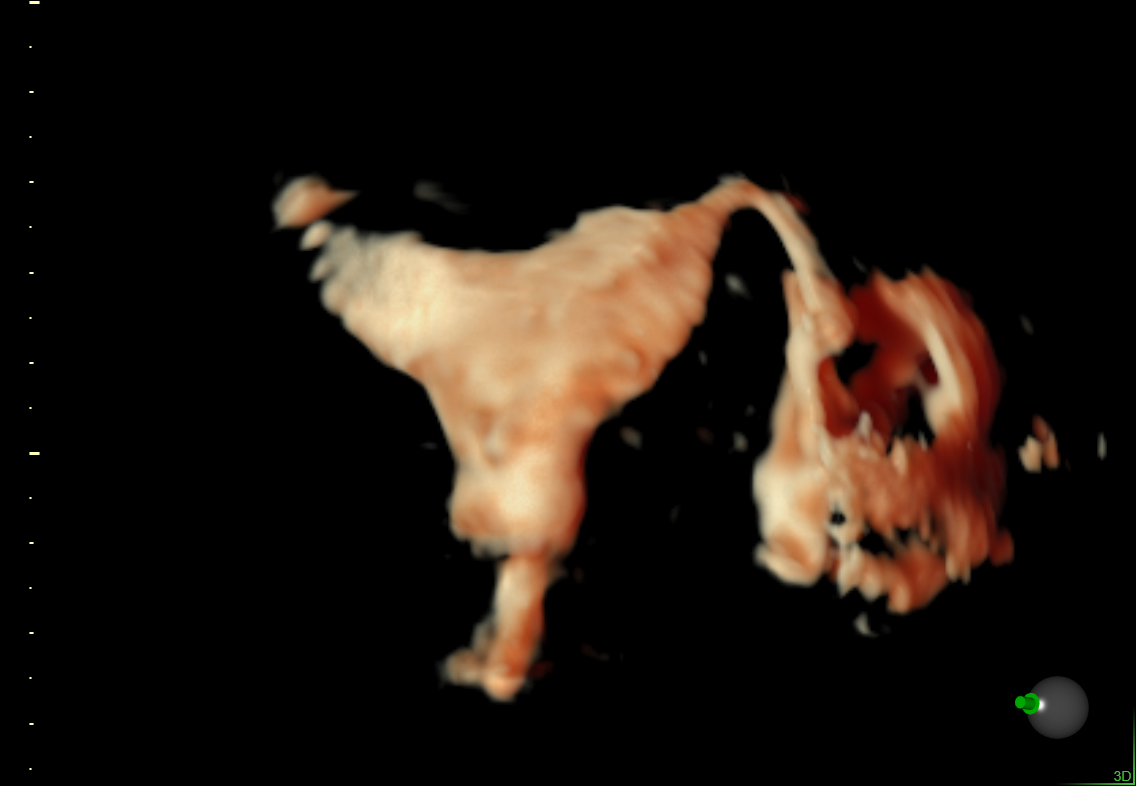
3D HyCoSy exam demonstrating a single patent fallopian tube
Q: What happens during your ultrasound assessment?
A: I take a two-step approach for the exam—beginning with a sonohysterography. A small amount of saline fluid is administered into the uterine cavity with a catheter. Using the Voluson probe in 3D mode, we can increase the sensitivity for the diagnosis of any uterine abnormalities. A few minutes later, we administer a foam gel through the same catheter to assess the tubes, which is called HyFoSy. While 2D is enough to evaluate tubal patency, Voluson’s 3D ultrasound allows for a more comprehensive exam and is the only way to see all portions of the tube. If the tubes are patent, the contrast will be visible around the ovaries, indicating everything is normal.
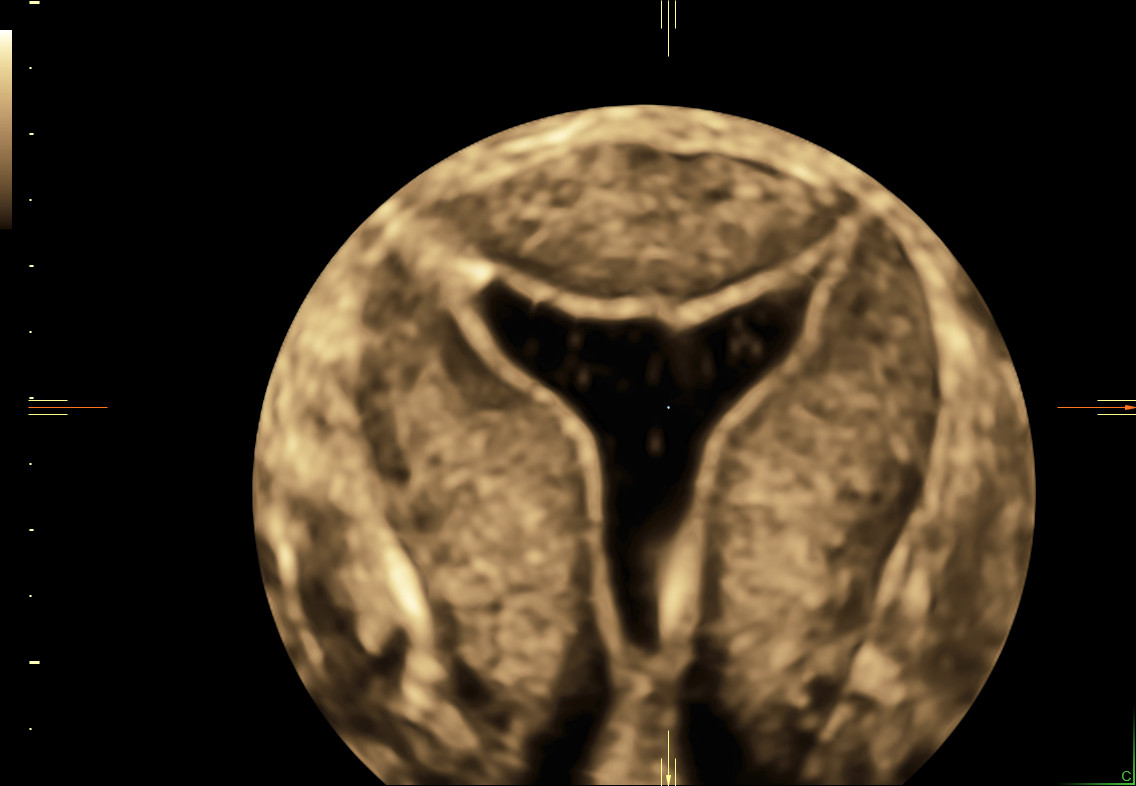
Sonohysterogram demonstrating a normal uterine cavity
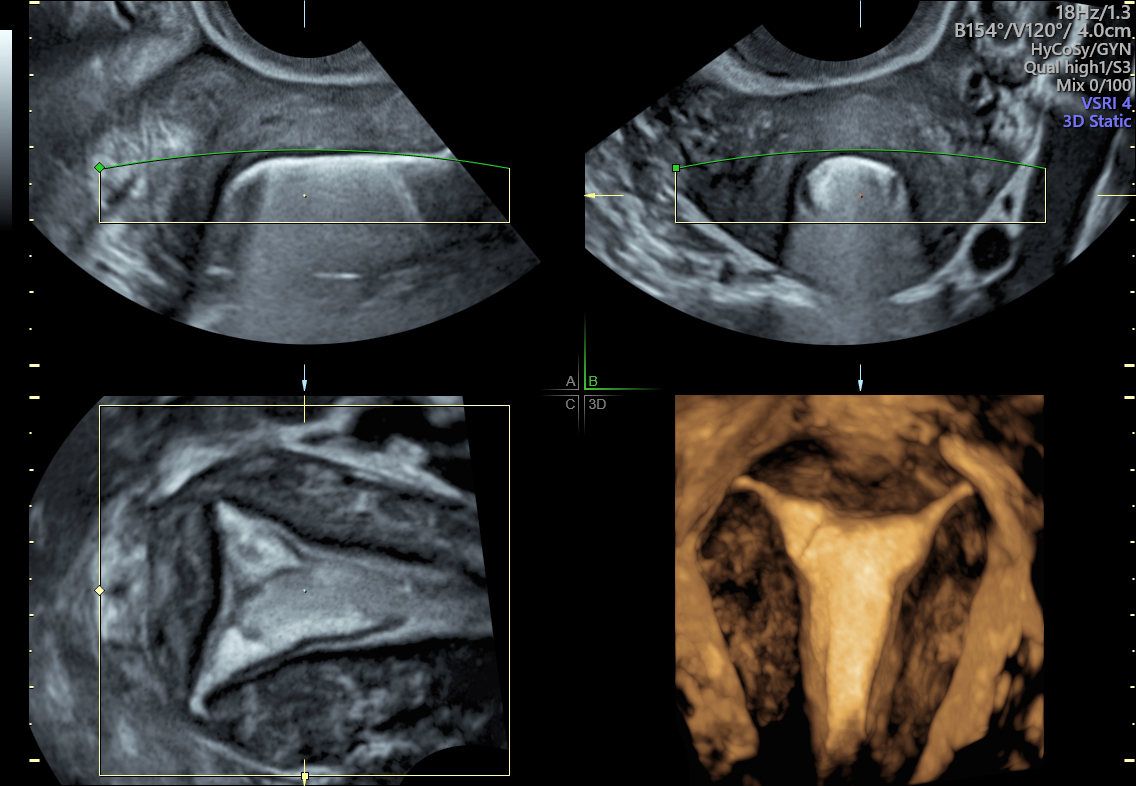
HyFoSy exam demonstrating a normal uterine cavity and the interstitial portion of the fallopian tubes
Q: Lack of skill of confidence could be a factor in a physician’s decision to utilize ultrasound for the fertility workup. How would you describe the learning curve for Voluson technology in HyCoSy and Sonohysterography exams?
A: It is not hard to master the procedures, especially for physicians who have performed basic ultrasounds. I’d tell my colleagues that you can get all this reliable information from Voluson ultrasound so it’s an overall gain. Learning the technology should not be considered a drawback.
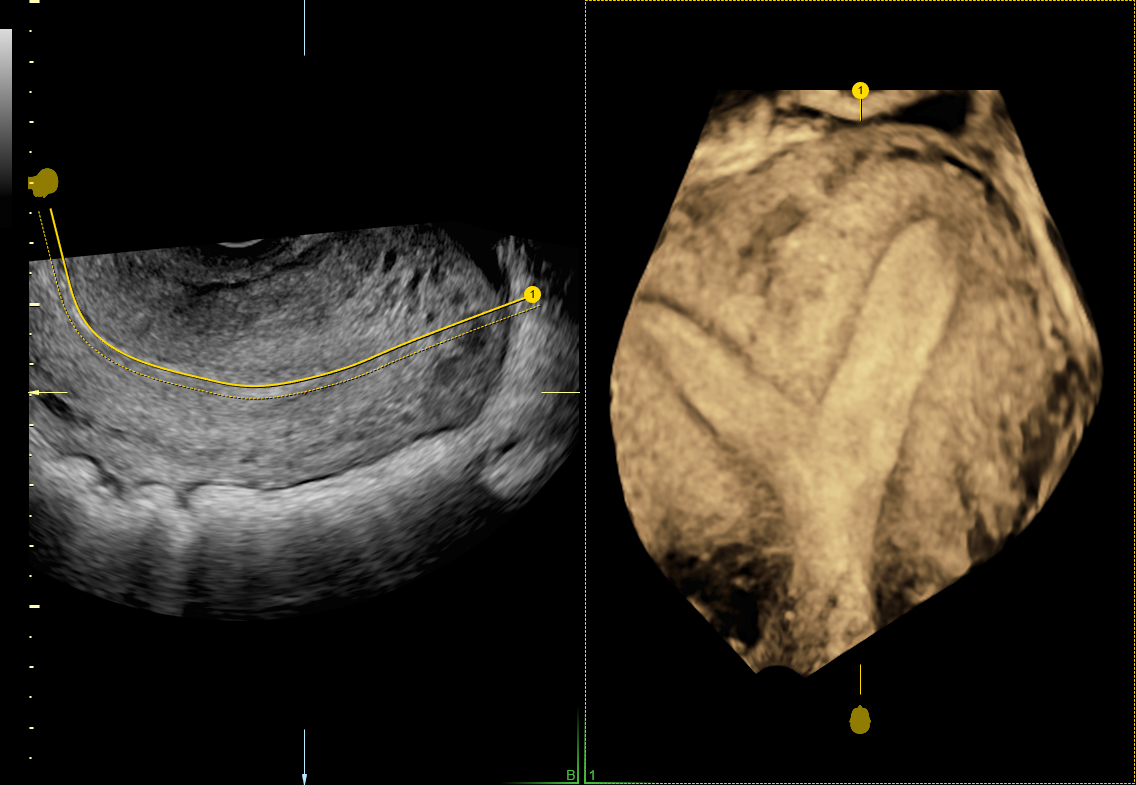
3D ultrasound using OmniView easily demonstrates a septate uterus.
Q: How has Voluson ultrasound technology made an impact on Reproductive Medicine?
A: Voluson is probably the best we have yet. GE works a lot in the field of gynecology and builds tools that are adjusted to our needs. They appear as a revolution for us with the 3D, all the technology, and software. They have totally changed the role of ultrasound in reproductive medicine and are part of all the good outcomes we are able to have with our infertility treatments.
Dr. Michael Grynberg is Director of Reproductive Medicine & Fertility at Hôpital Antoine Béclère, near Paris, France. He’s a fertility specialist with expertise in Oncofertility, which aims to expand reproductive options for women with a cancer diagnosis. Learn more about Dr. Grynberg’s clinic

Dr. Michael Grynberg
-
Fertility can be a concern for people in their reproductive years, as these patients may have questions about diagnoses, treatments and causes of infertility. Learn about some of the causes, diagnostic test and treatment options available to patients. What to Know About The Causes of Infertility, Evaluation and Treatment.
-
A Voluson 3D transvaginal ultrasound offers real advantages when screening for infertility symptoms. Learn how Dr. Hanson manages fertility testing and sign up to Stay Informed. Understanding infertility symptoms before the disease.
-
Using pelvic ultrasound to screen the female reproductive organs for structural causes of infertility is one of the best first steps when beginning an infertility assessment. Voluson 2D and 3D ultrasound is used to assess uterine shape, size and provides views that allow you to assess for normal anatomy or pathology. Learn more about how Voluson can help enhance communication with your patients. What is infertility? What patients want to know.
-
Learn about why Dr. Hanson feels that HyCoSy is the simpler, safer, more informative test of choice for determining tubal patency during a transvaginal ultrasound exam. Not just alphabet soup: get cozy with HyCoSy.
-
3D ultrasound enables physicians to build strong relationships with their patients by anticipating possible congenital uterine anomalies in women with infertility or repeat adverse pregnancy outcomes. What You Should Know About Congenital Uterine Anomalies.
-
Learn more about how Voluson ultrasound systems continually push the boundaries of Reproductive Medicine imaging to give you simple, yet innovative tools to help you and your patients achieve their dream of a successful pregnancy.
-
An estimated one in four couples worldwide are affected by infertility. While infertility is rarely considered a national health priority by governments, its impact on the lives of individuals, couples and their families who experience problems having children are enormous. The development of Assisted Reproductive Technologies (ART) is gradually transforming the range of options available to couples and individuals, bringing hope to millions. The WHO gives insights with this IFFS Surveillance 2016 report about the opportunities and challenges facing expansion of ART services.
*HyCoSy is not cleared in the United States and may not be available in all other countries.


